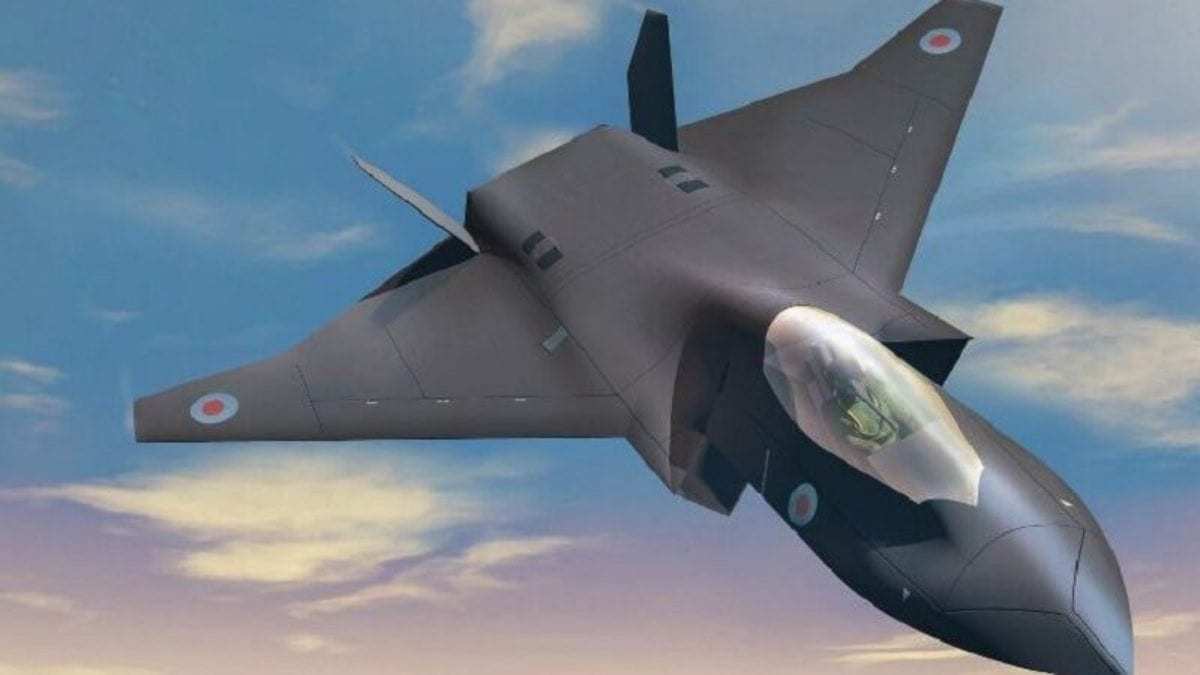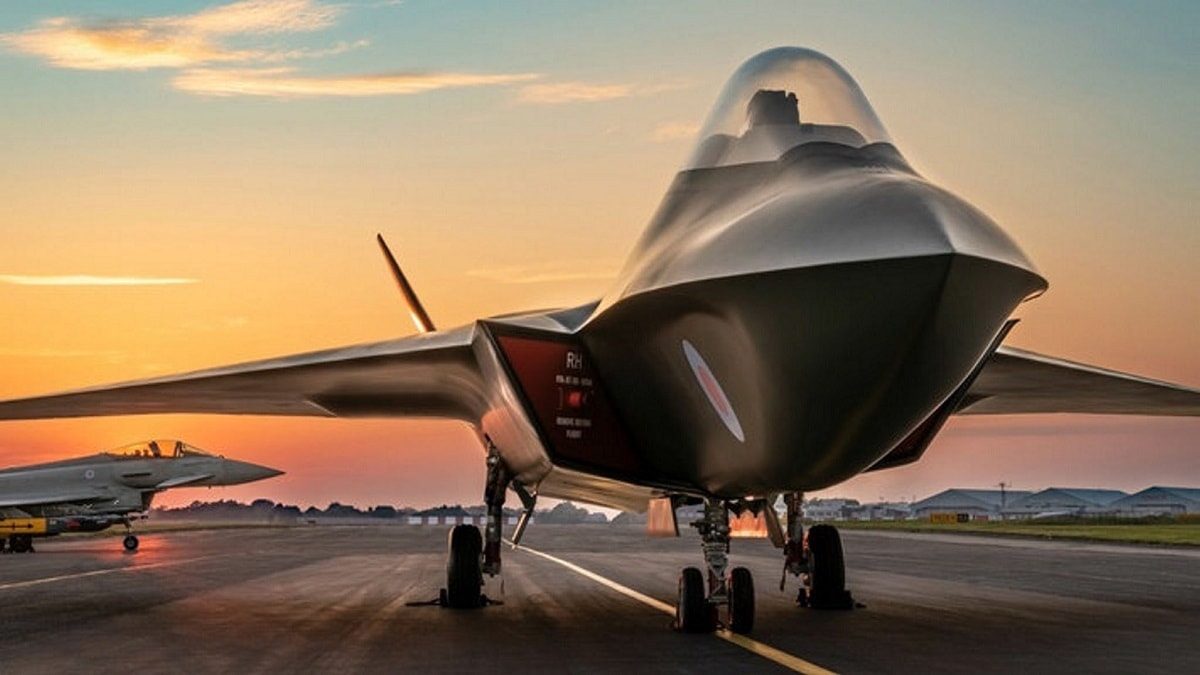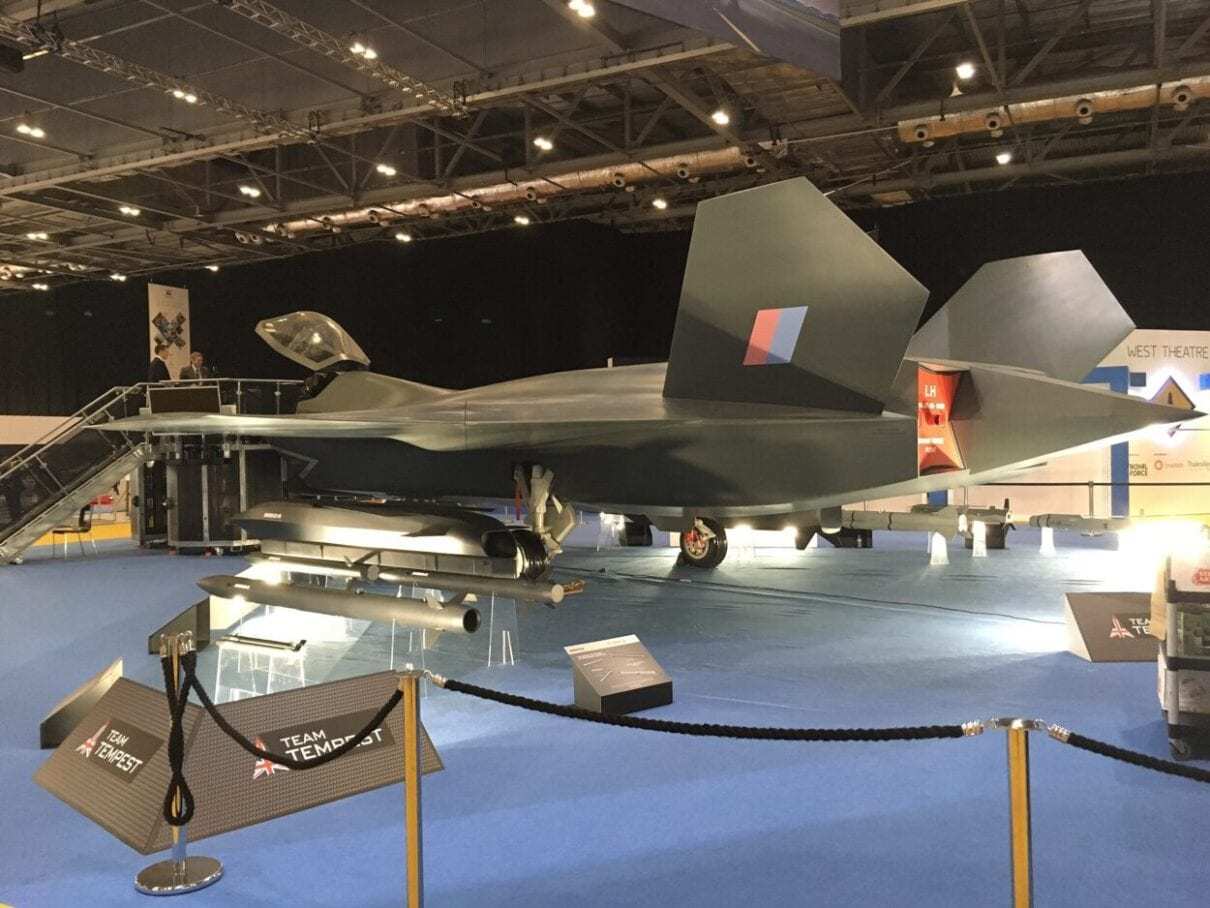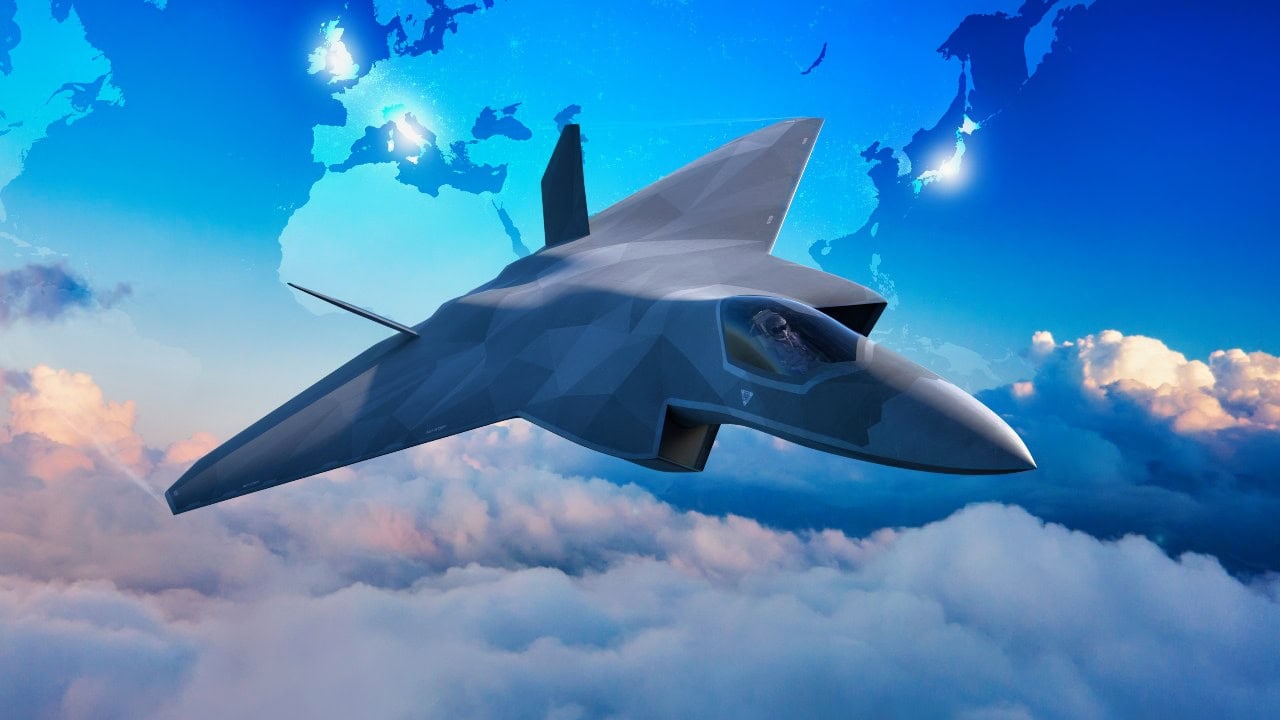Key Points – The Global Combat Air Programme (GCAP) unites the UK, Italy, and Japan in developing a sixth-generation fighter, likely merging the UK’s Tempest and Japan’s F-X concepts.
-Top requirements demand exceptional capabilities: double the F-35’s payload and transatlantic range on internal fuel, necessitating major engine advancements.

UK Stealth Tempest Fighter
-A Tempest demonstrator, expected around 2027, is testing key technologies including modular design, optional uncrewed flight, AI, directed energy weapons, and drone (CCA) control.
-GCAP also aims for cost and time savings through advanced digital design and manufacturing, though achieving such efficiencies remains a key challenge for the multinational partnership.
AI, Lasers & Drone Control: The Cutting-Edge Tech of the GCAP Fighter
European aerospace and defense industries’ answer to the US Next-Generation Air Dominance 6th-generation fighter program is the Global Combat Air Programme. The project is a multi-national effort led by the UK, with Italy and Japan now partners. Many expect the actual design to be a “merger” of the UK Tempest 6th-generation fighter and Japan’s F-X project.
The Royal Air Force (RAF) officer responsible for developing the design requirements, known only as Group Captain Hill, for this next-generation fighter, has said that there are two prime, top-level priority performance points for the new aircraft.
One requirement is that the aircraft carry a substantial payload. The target is a weapons load double that of the F-35.
The other is that it would have a “really extreme range.” The same UK requirements team defines extreme range as being able to cross the Atlantic using only its internal fuel tanks.
Central to meeting this range requirement will be the Europeans’ achieving some very real breakthroughs in propulsion technology. In the US, the answer that has been proposed to provide the long ranges that would be required for the NGAD F-47 fighter in the Pacific theatre is the new GE Aviation Adaptive Cycle Engine (ACE).
This engine is designed to increase aircraft thrust in combat mode by up to 20 percent and improve fuel consumption by 25 percent. It is also supposed to produce a more than 30 percent increase in range for the aircraft. The use of ceramic and other non-ferrous materials will give the Tempest demonstrator greater aircraft heat dissipation capability.
What’s In a Name?
At present, there are suggestions that even though the program is no longer a UK-only effort, a demonstrator for the Tempest program is still being built and is expected to be flown sometime in 2027. Just what the role of this demonstrator will be in the collective effort of the GCAP is not clear.
The Tempest demonstrator is supposed to be highly modular and optionally unmanned. According to materials available in the open domain, the aircraft is also to incorporate all of the latest emerging technologies to include (of course) AI and also be fitted with directed energy weapons and swarming technology that would be used to control Collaborative Combat Aircraft (CCA).
Reportedly, more than half of the demonstrator aircraft’s structure is already being assembled. One of the main points of emphasis for the program is integrating all the manufacturing processes, but in parallel, employing new technologies like 3D printing so that the production cycles will be shorter and the overhead costs will be lower. One of the new methods to be utilized is Hot Isostatic Pressing (HIP), which can create metal parts while minimizing any waste of materials.
Subsystem Testing for GCAP
The propulsion system for this aircraft may not be available for several years, so Rolls-Royce will provide two of the same EJ200 engines that power the Eurofighter for the Tempest demonstrator aircraft. While the engines will not be able to produce the range and fuel consumption reduction required for the final Tempest design, they will allow the team to test the operational performance of the aerodynamic design.

BAE Tempest. Image VIA BAE.

Tempest Stealth Fighter. Artist Image from BAE.

A mock-up of the Tempest fighter in 2019.
Although the demonstrator aircraft does not exist yet, its predicted performance has been programmed into flight simulators. As of nine months ago, test pilots for the program had already flown 215 simulated hours to provide feedback for the design team’s final configuration.
New digital weapon integration processes, which will be part of the Tempest design, are another jump of more than one generation beyond the Eurofighter. This technology, which involves collaboration between BAE Systems and MBDA UK, is projected to streamline the integration of new weaponry significantly.
The phrases used constantly in conjunction with the major points of aircraft are “reducing both development time cycles and costs over the life of the system.” This is not the first program to have these ambitions. The question is whether GCAP can succeed in this endeavor, whereas almost every other program that came before it fell short of this objective.
About the Author: Reuben F. Johnson
Reuben F. Johnson is a survivor of the February 2022 Russian invasion of Ukraine and is an Expert on Foreign Military Affairs with the Fundacja im. Kazimierza Pułaskiego in Warsaw. He has been a consultant to the Pentagon, several NATO governments and the Australian government in the fields of defense technology and weapon systems design. Over the past 30 years he has resided in and reported from Russia, Ukraine, Poland, Brazil, the People’s Republic of China and Australia.

